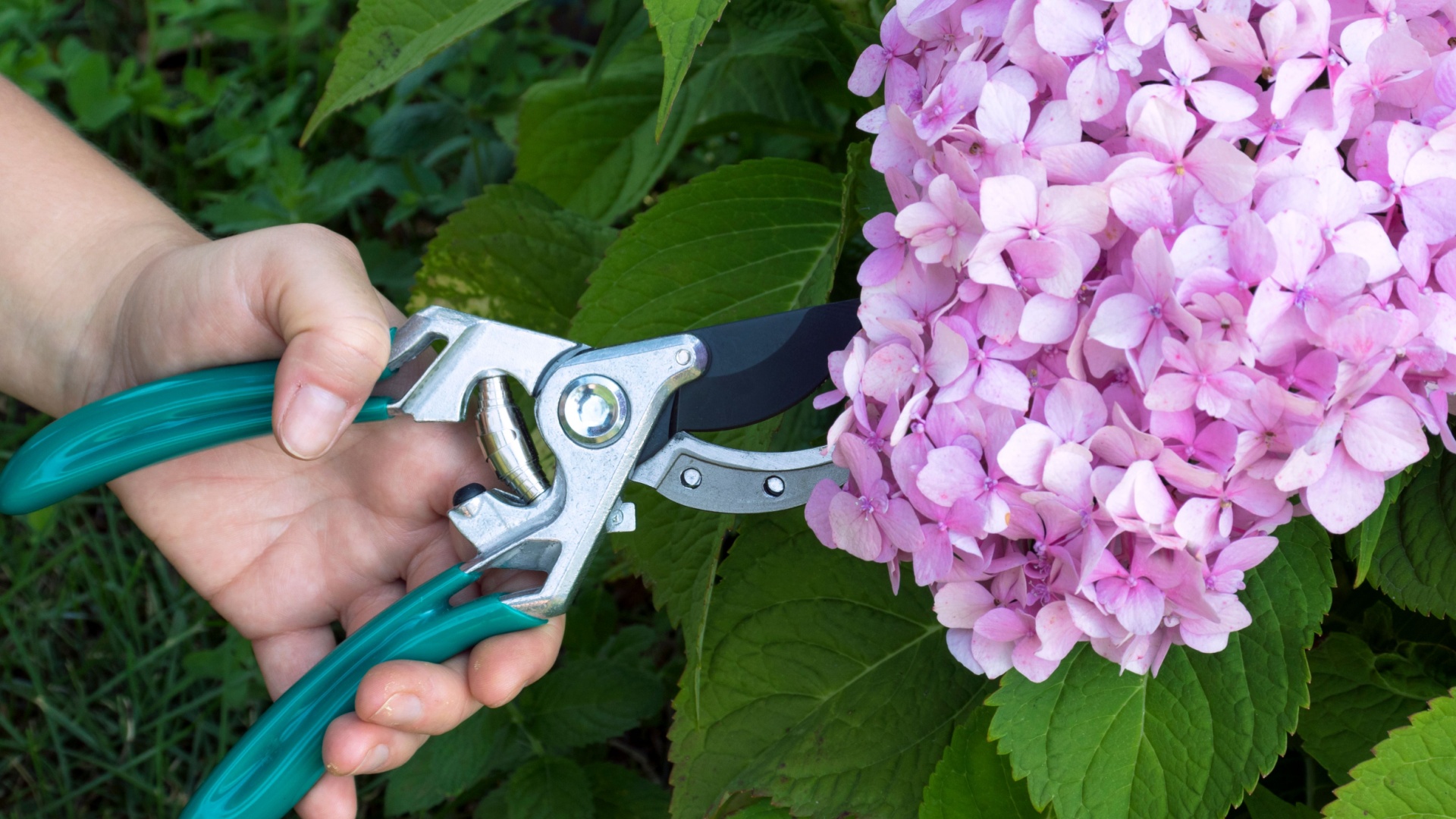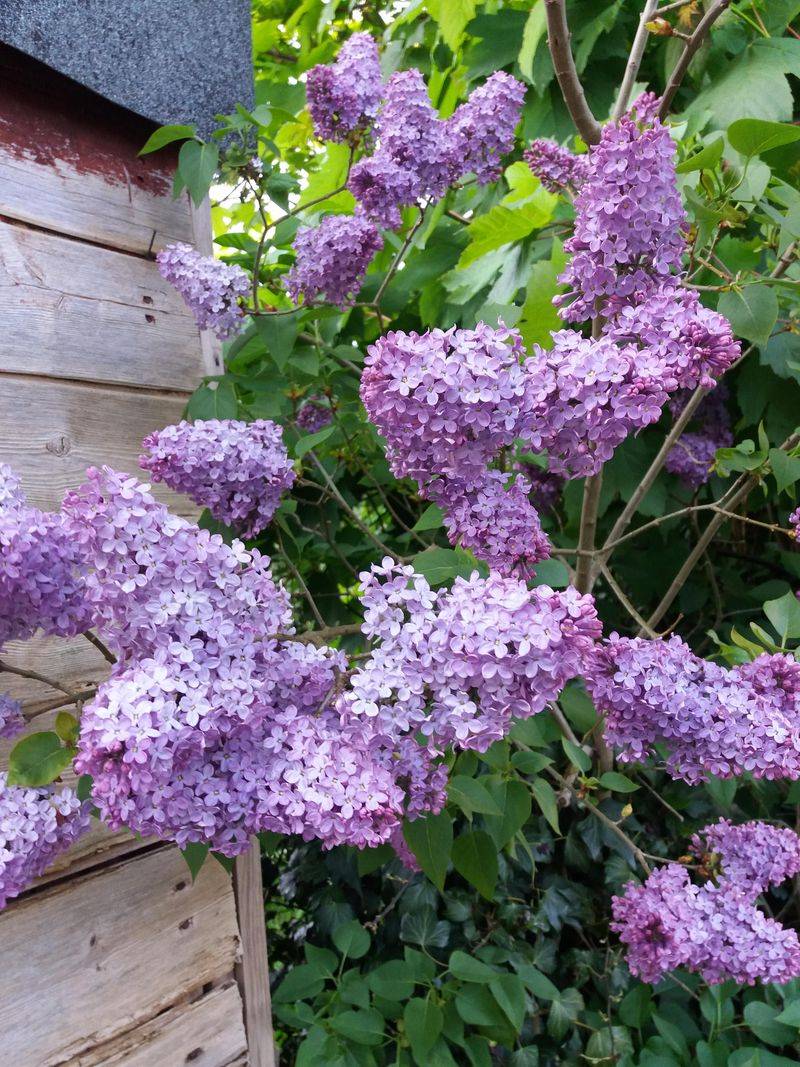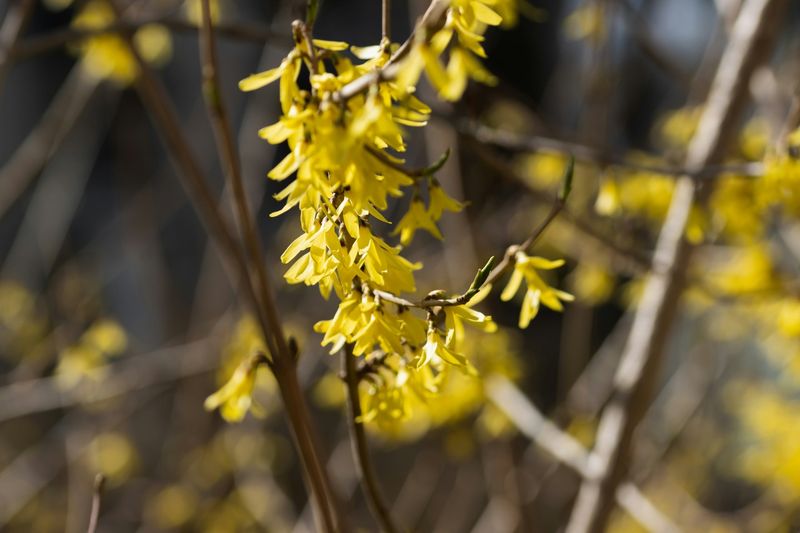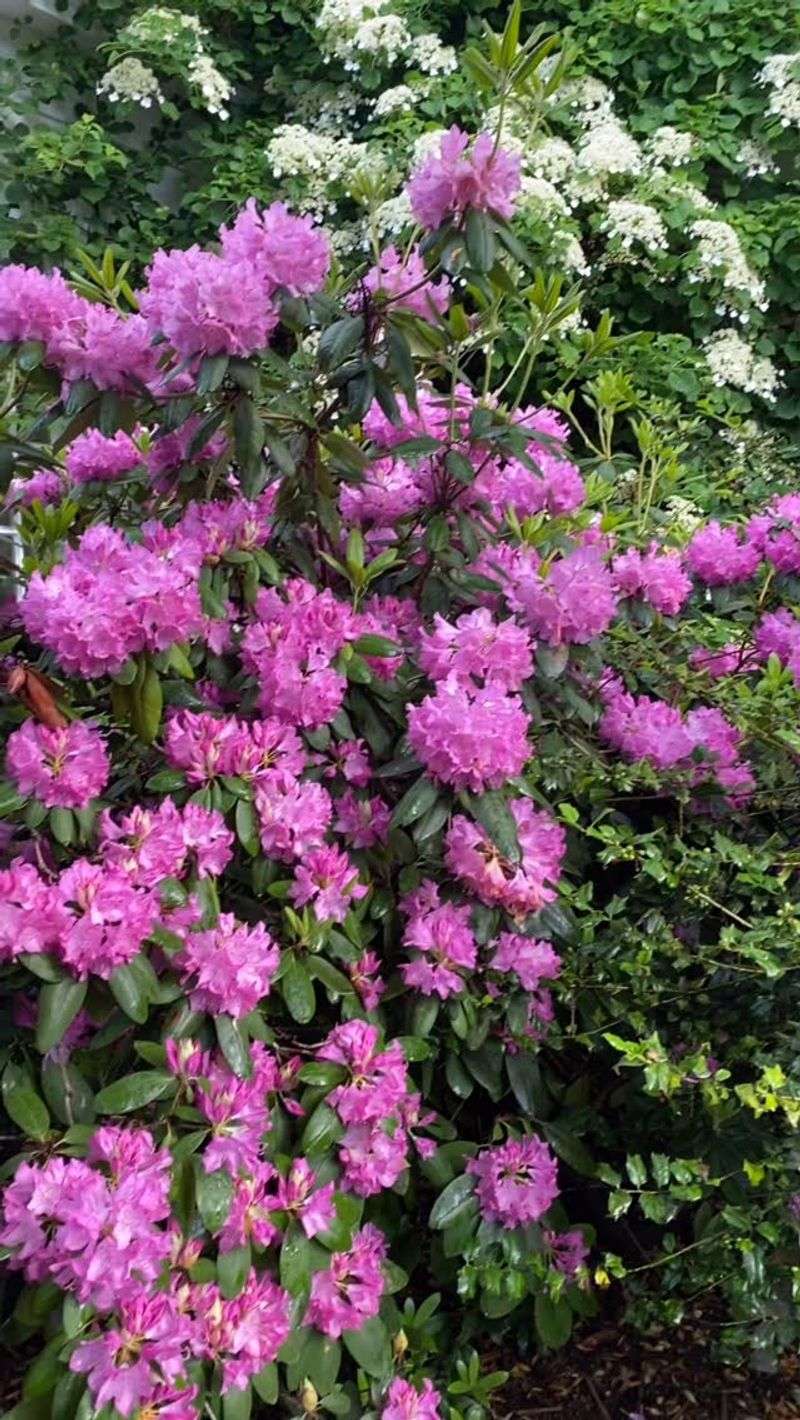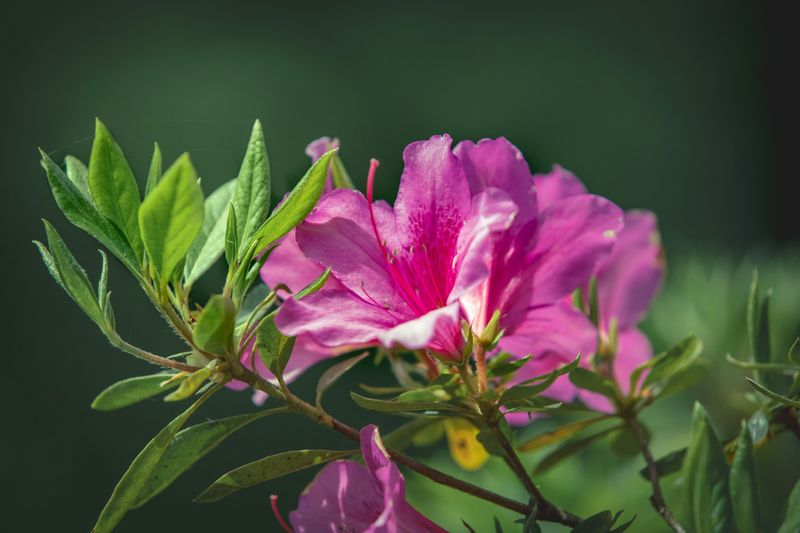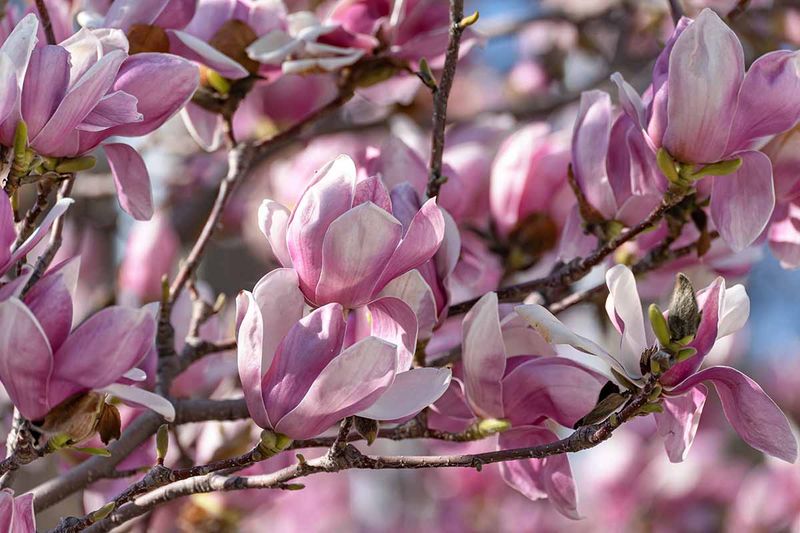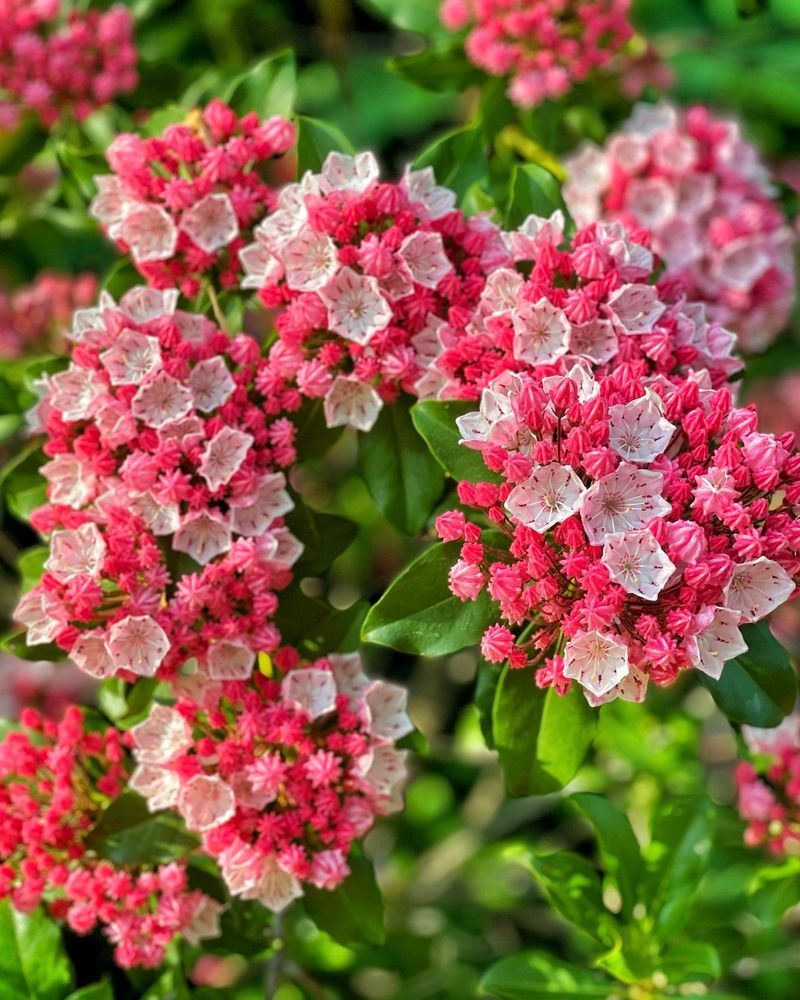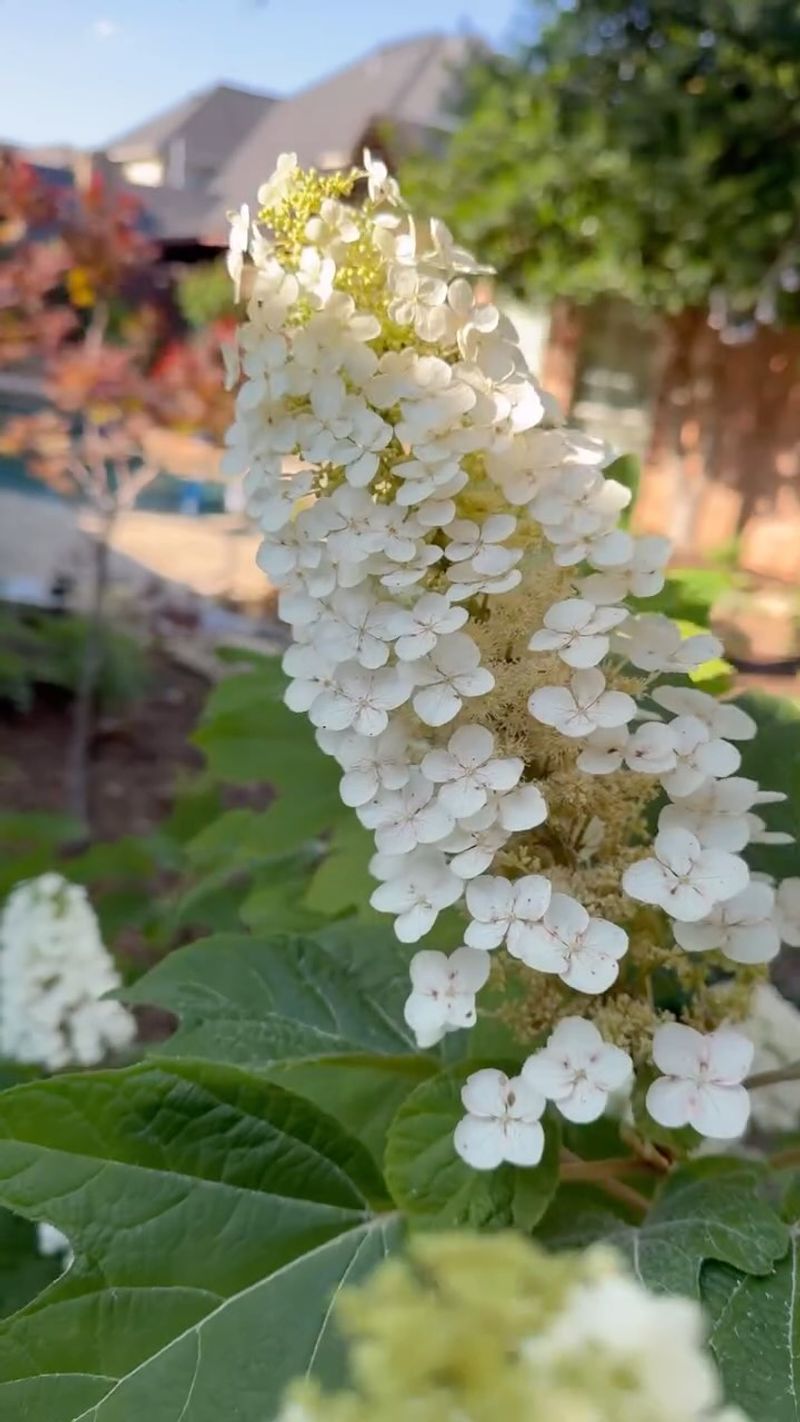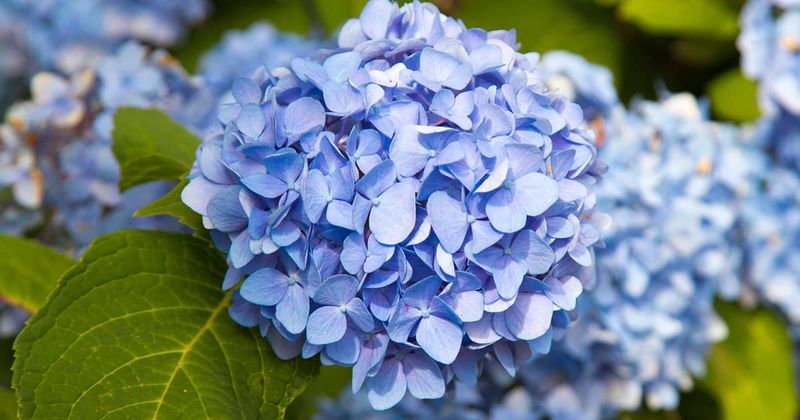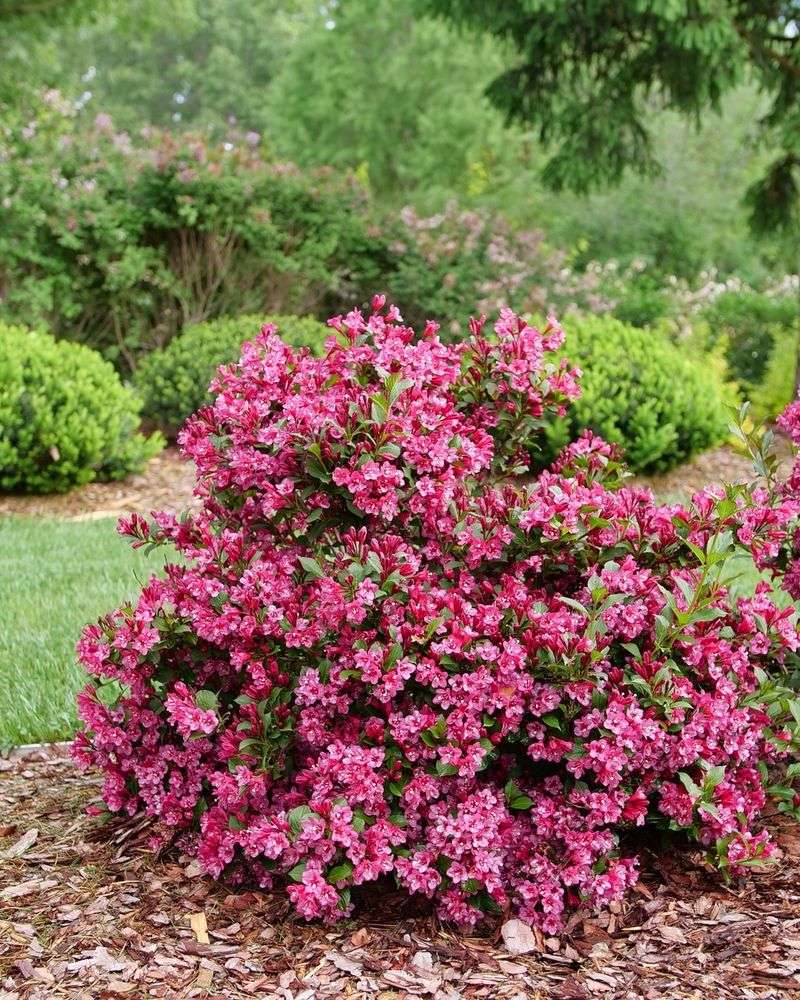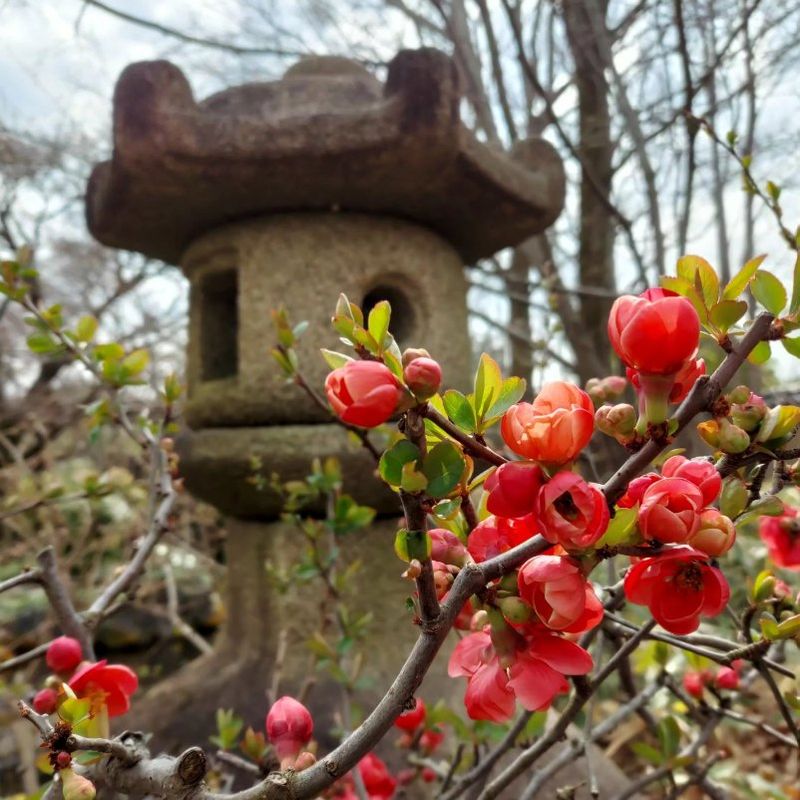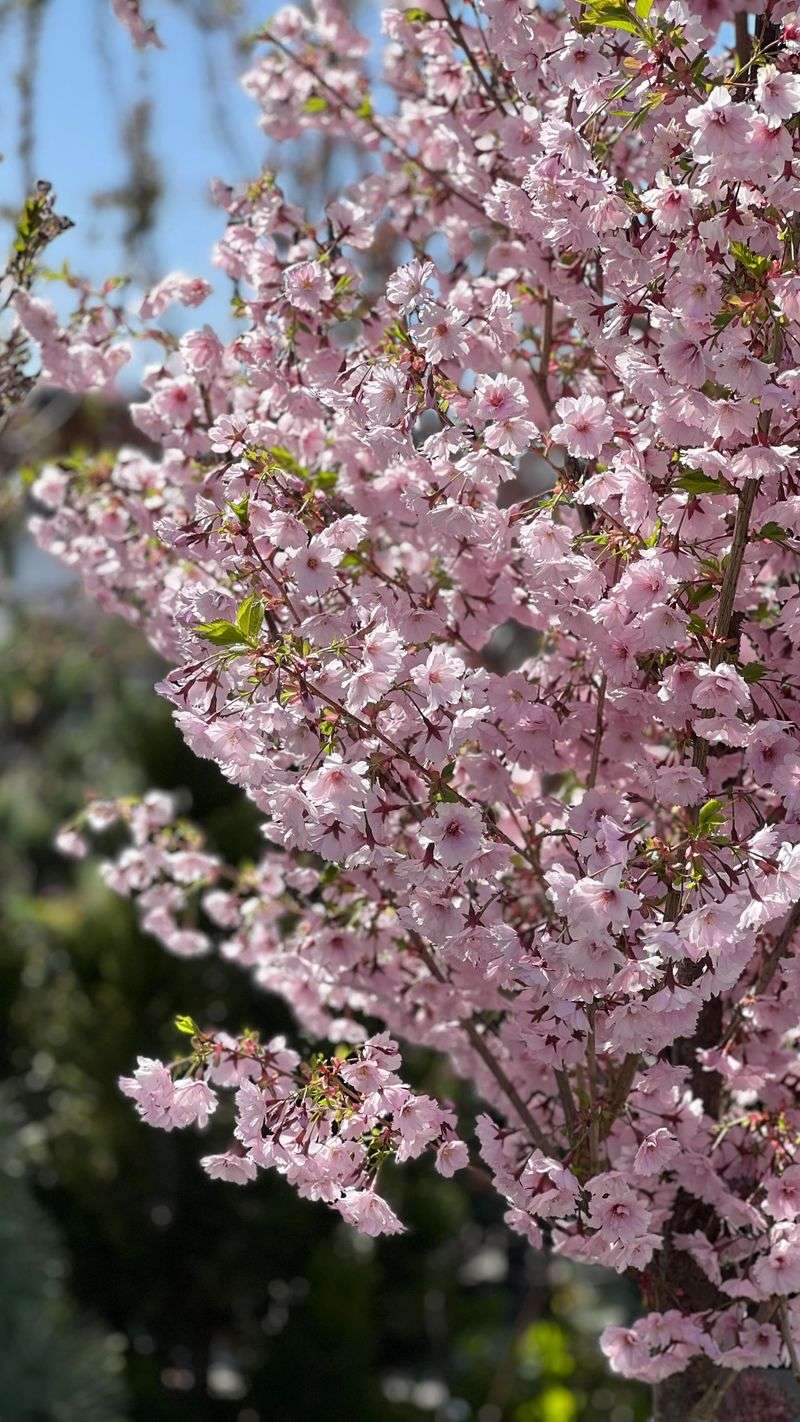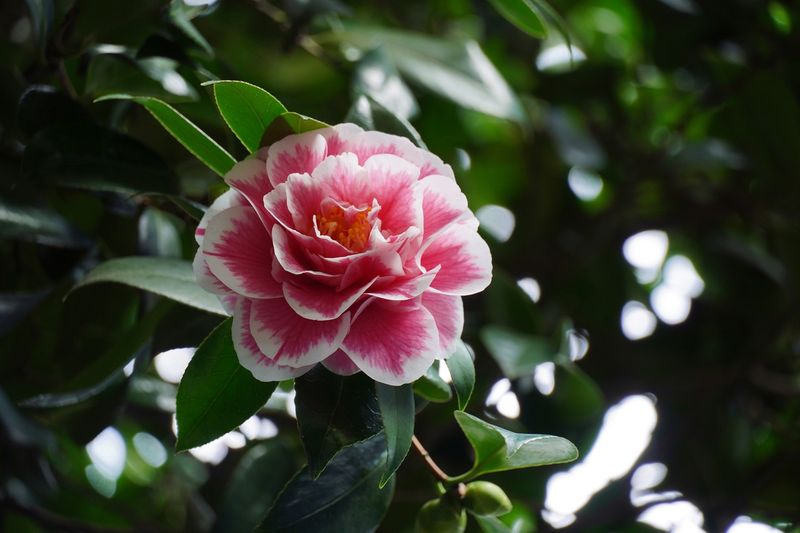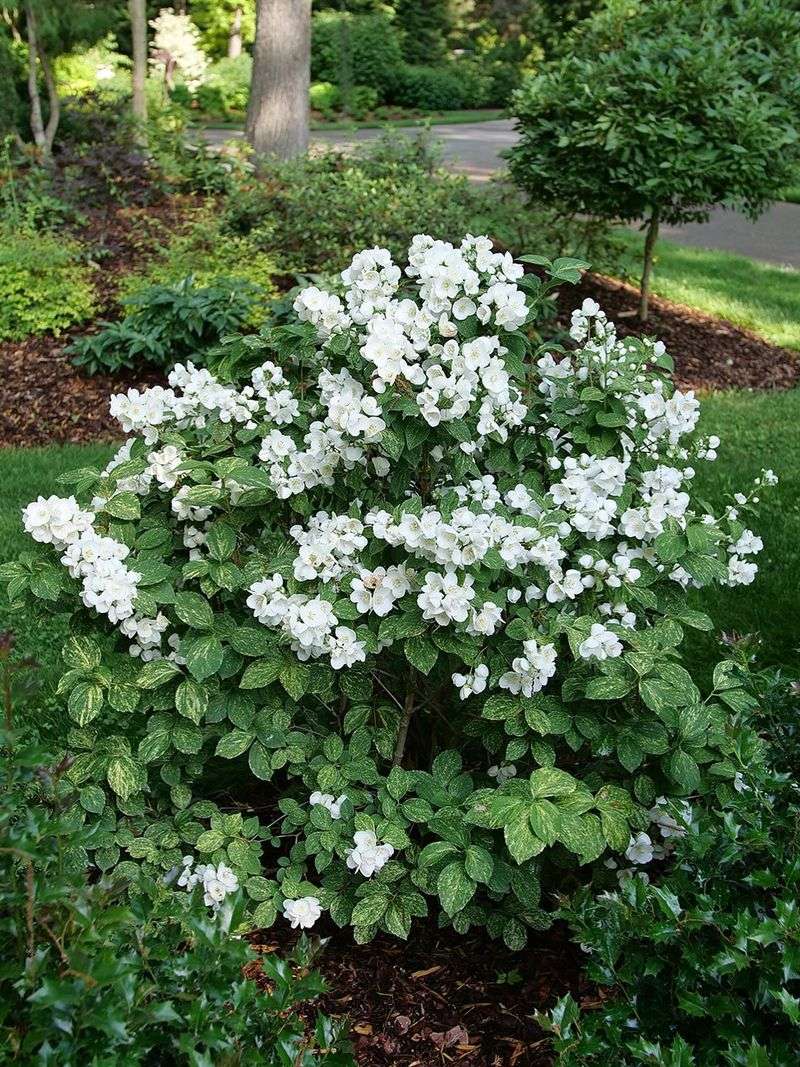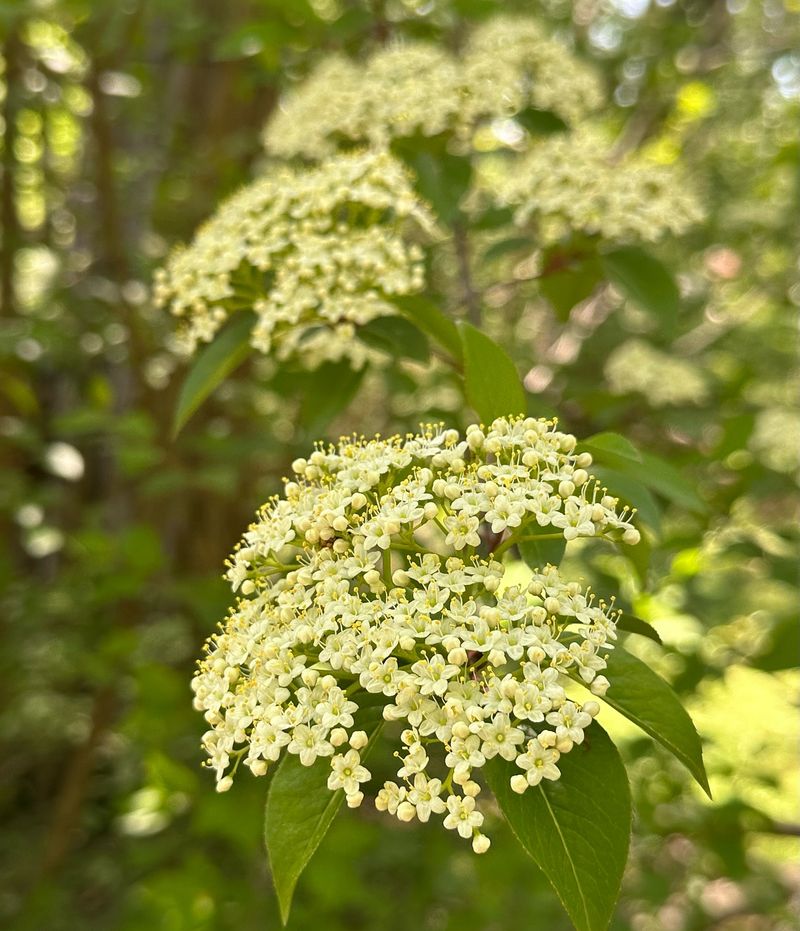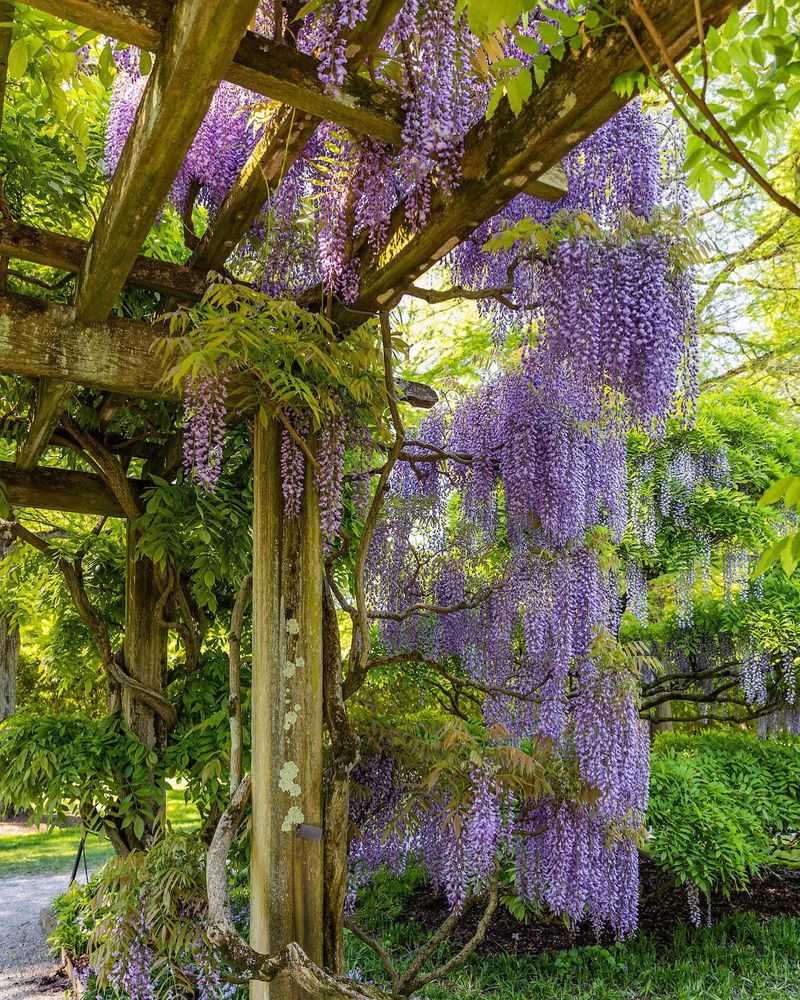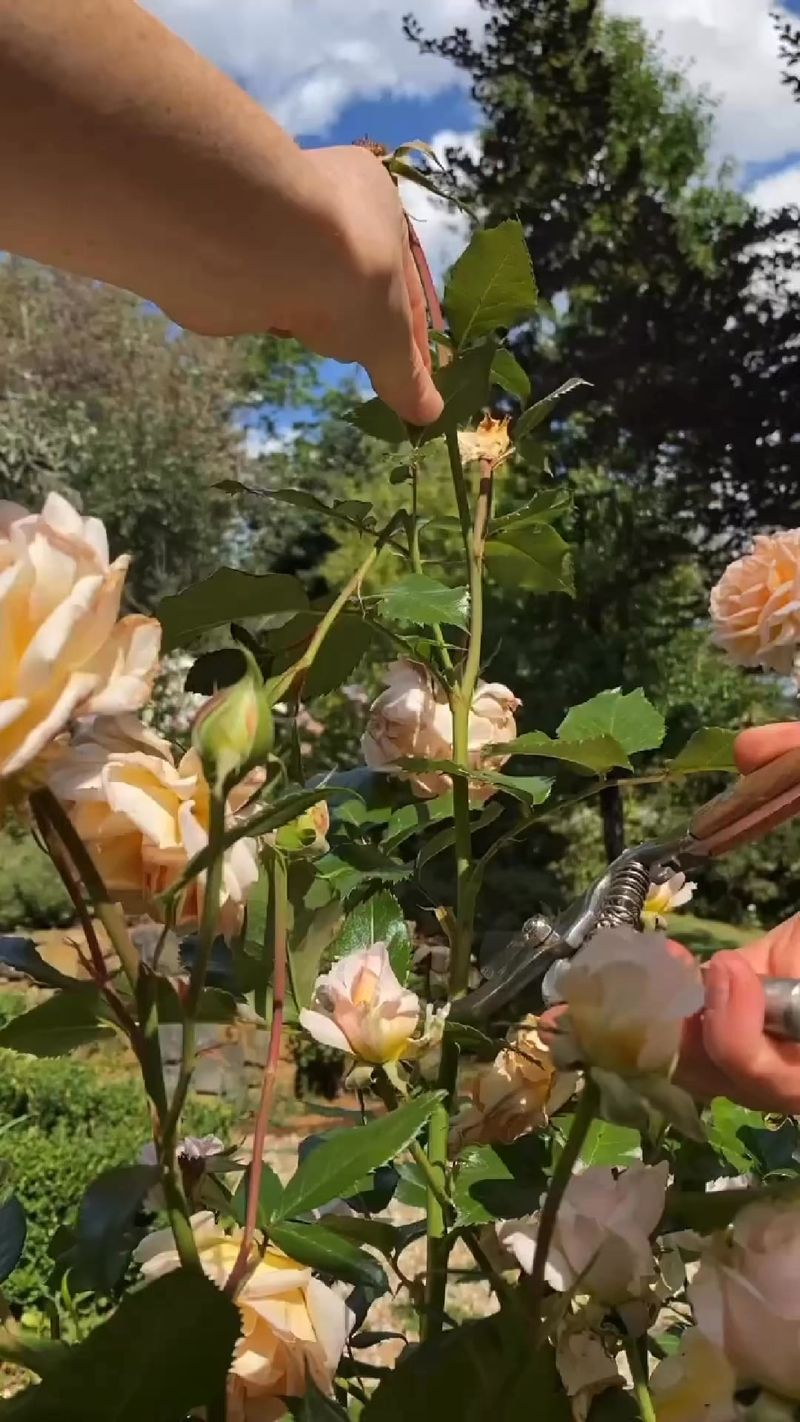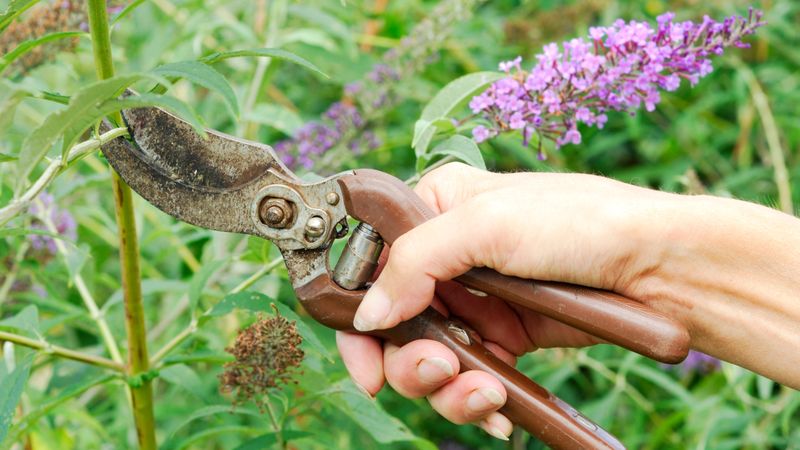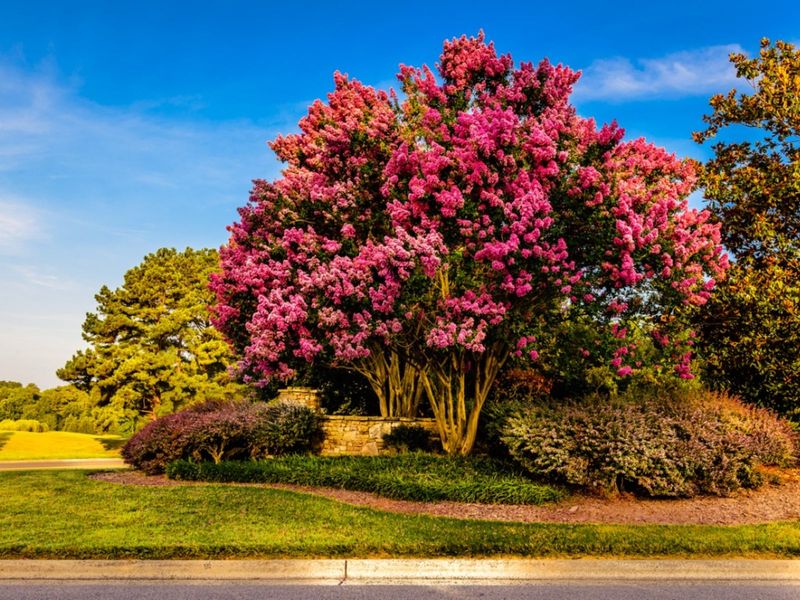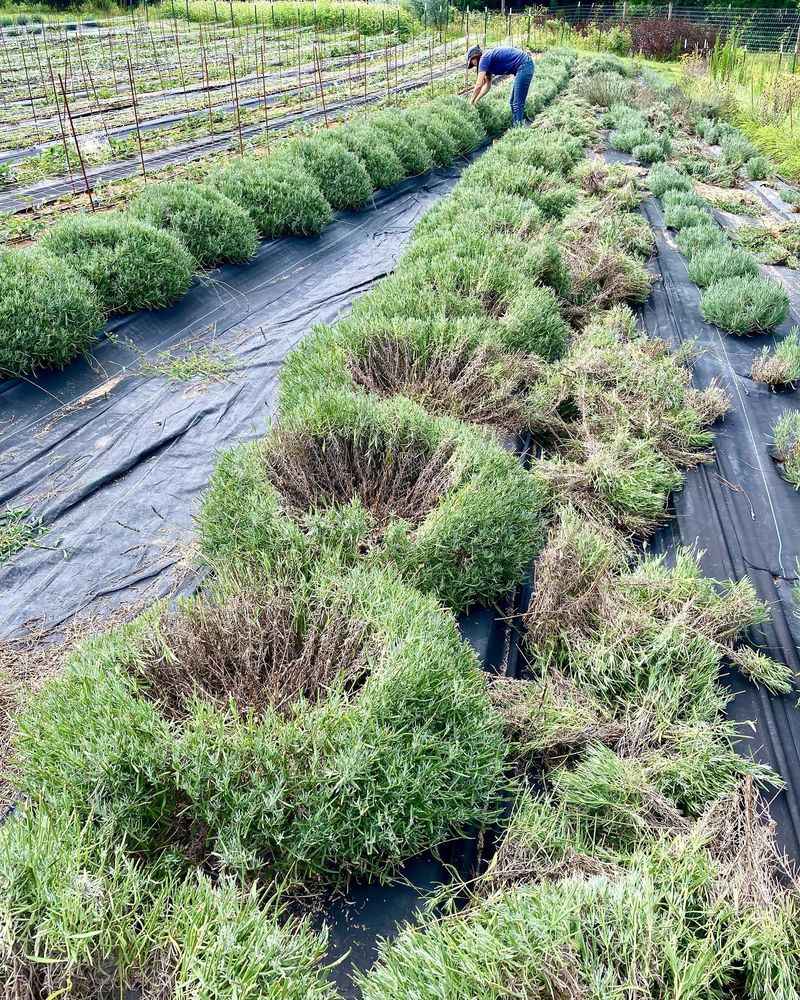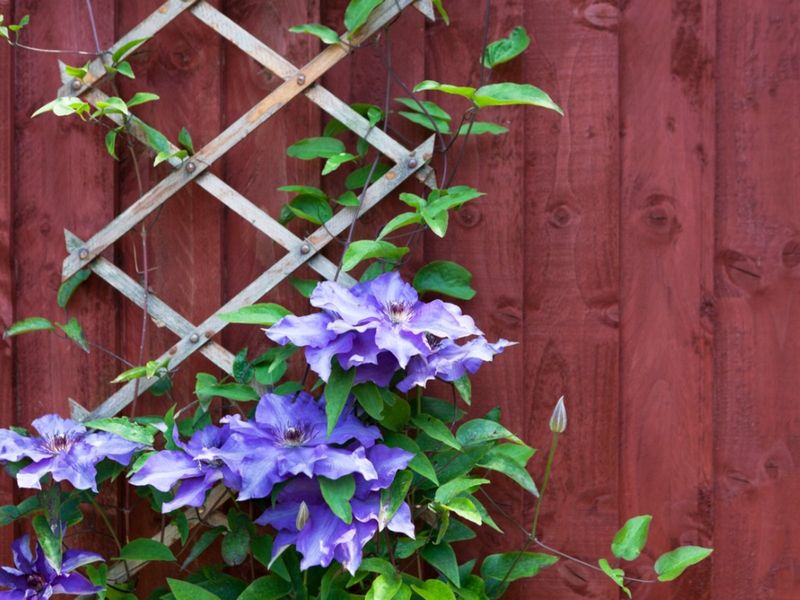Grab those pruning shears—but don’t get snip-happy just yet! Some plants despise a summer trim and will punish you with fewer blooms or stunted growth. Others? They thrive on it.
Learn which 15 plants you should leave alone during the heat—and the 5 that love a good summer cut.
1. Lilacs – Spring’s Fragrant Show-Stoppers
Lilacs form their flower buds in late summer for the following spring. Cutting them back during summer months means you’ll remove these developing buds and miss out on their incredible fragrance next year.
Wait until immediately after they finish flowering in spring to shape them. This gives the plant plenty of time to develop new flower buds before going dormant in winter.
2. Forsythia – Early Spring’s Golden Greeting
Those sunny yellow flowers that announce spring’s arrival develop on old wood from buds formed the previous summer. Summer pruning removes these potential blooms, leaving you with a sad, flowerless bush next spring.
Grab your pruners only after the forsythia has finished its golden display in early spring. You’ll have about two weeks after blooming ends to shape the plant without affecting next year’s flower show.
3. Rhododendrons – Woodland Wonders
Summer pruning spells disaster for these magnificent shrubs. By mid-summer, they’ve already formed the flower buds that will open next spring, and cutting them back removes those future blooms.
The ideal time to prune rhododendrons is immediately after flowering, usually in late spring. Deadhead spent blooms carefully to encourage bushier growth without removing developing buds.
4. Azaleas – Delicate Spring Beauties
Summer pruning robs these colorful shrubs of next year’s flowers. Like their cousins the rhododendrons, azaleas set their flower buds in summer for the following spring display.
Prune within three weeks after flowering ends. This timing allows the plant to put out new growth and develop flower buds for next year’s show without interference.
5. Magnolias – Elegant Tree Blossoms
Magnolias create their flower buds during summer for the following spring. Taking pruners to them during the warm months means sacrificing those gorgeous cup-shaped blooms that make such a statement.
These trees actually need minimal pruning, but if necessary, do it immediately after flowering. Young magnolias can be shaped in late winter while dormant, but established trees should be left largely untouched.
6. Mountain Laurel – Native Woodland Gems
Summer pruning eliminates the flower buds that mountain laurel forms after blooming. These native shrubs produce unique star-shaped flower clusters that are worth protecting.
Prune lightly right after flowering finishes in early summer. Focus on removing dead wood and wayward branches without cutting too deeply into the plant.
7. Oakleaf Hydrangeas – Wild Woodland Beauty
Unlike their mophead cousins, oakleaf hydrangeas bloom on old wood from buds formed the previous year. Summer pruning removes these developing flower buds, resulting in few or no dramatic cone-shaped blooms next season.
Wait until immediately after flowering to prune, usually in early summer. This gives the plant plenty of time to develop new flower buds on this season’s growth before fall arrives.
8. Bigleaf Hydrangeas – Blue and Pink Showstoppers
Those gorgeous mophead and lacecap hydrangeas with blue or pink flowers bloom primarily on old wood. Summer pruning removes the buds already forming for next year’s display.
Prune only right after flowering ends, typically by mid-July. Newer reblooming varieties offer more flexibility, but traditional bigleaf types need this careful timing to ensure beautiful blooms year after year.
9. Weigela – Spring’s Trumpet Flowers
Weigela produces its trumpet-shaped flowers on old wood from buds set the previous year. Summer pruning removes these developing buds, significantly reducing next spring’s floral display.
The best time to prune is right after flowering finishes in late spring. Some newer varieties rebloom throughout summer, but even these perform best when major pruning happens after the spring flowering period.
10. Flowering Quince – Early Spring’s Fiery Display
Flowering quince develops its flower buds in summer for next year’s early spring show. Summer pruning removes these buds, eliminating the fiery red, orange, or pink blossoms that brighten the early spring landscape.
Prune immediately after flowering ends in spring. This shrub blooms very early, so you’ll typically be pruning in April or May, giving it plenty of time to set new flower buds.
11. Flowering Cherries – Spring’s Pink Cloud
Flowering cherry trees set their flower buds during summer for next spring’s breathtaking display. Summer pruning removes these developing buds, potentially ruining the spectacular show of delicate pink blossoms.
Prune only after flowering has finished in spring. Major structural pruning is best done in late fall or winter when the tree is dormant, but avoid heavy pruning that might reduce flowering.
12. Camellias – Winter’s Elegant Blooms
Summer is when camellias form flower buds for their fall, winter, or spring blooms. Pruning during this critical period removes these buds and significantly reduces their beautiful showing of rose-like flowers.
Prune camellias immediately after they finish flowering. For winter-blooming types, this means early spring pruning. Spring-bloomers should be pruned by early summer at the latest.
13. Mock Orange – Sweet-Scented Spring Delight
Mock orange develops its flower buds in summer on the previous season’s growth. Summer pruning removes these developing buds, eliminating the intoxicatingly fragrant white blossoms that give this shrub its name.
Prune immediately after flowering ends in late spring or early summer. This gives the plant plenty of time to produce new growth that will bear next year’s sweetly scented flowers.
14. Viburnum – Spring’s Versatile Bloomers
Many viburnums form their flower buds in summer for next spring’s display. Summer pruning removes these developing buds, reducing or eliminating their clusters of white or pink flowers.
Wait until immediately after flowering to prune these versatile shrubs. Some types also produce colorful berries after flowering, adding another reason to avoid summer pruning that might remove developing fruit.
15. Wisteria – Cascading Purple Dreams
Wisteria’s spectacular hanging flower clusters develop from buds formed the previous year. Summer pruning can remove these buds, resulting in fewer of those dramatic purple or white flower racemes next spring.
Prune wisteria twice yearly for best results. Do the main pruning after flowering in late spring or early summer. Then follow up with a light pruning in winter to remove excessive growth while preserving flower buds.
16. Roses – Summer’s Perfect Pruning Candidates
Unlike many flowering plants, most roses benefit from summer pruning! Removing spent flowers (deadheading) encourages continuous blooming throughout the growing season.
Cut just above an outward-facing leaf with five leaflets for best results. For repeat-blooming varieties, this stimulates new growth and more flower buds. Save hard pruning for late winter or early spring when plants are dormant.
17. Butterfly Bush – Summer’s Butterfly Magnet
Butterfly bushes actually benefit from summer pruning. Unlike spring-flowering shrubs, they bloom on new growth produced during the current season.
Deadheading spent flower spikes encourages continued blooming throughout summer and fall. Cut back flower clusters as they fade to stimulate new growth and more flowers, keeping these butterfly magnets productive all season long.
18. Crape Myrtle – Summer’s Colorful Showpiece
Summer is actually the perfect time to prune crape myrtles! Unlike spring-flowering trees and shrubs, they bloom on new growth produced during the current season.
Light pruning during summer can extend the blooming period. Remove spent flower clusters (deadheading) to encourage a second or even third round of those vibrant pink, purple, red, or white flower panicles before fall arrives.
19. Lavender – Mediterranean Summer Beauty
Summer is ideal for pruning lavender after its first flowering cycle. Unlike spring-flowering shrubs, lavender benefits from a light trimming after blooms fade in early to mid-summer.
Cut back about one-third of the current season’s growth, being careful not to cut into woody stems. This promotes bushier growth and may encourage a second, smaller flush of those fragrant purple flower spikes before season’s end.
20. Clematis – Climbing Beauty with Special Rules
Summer pruning for clematis depends entirely on which type you have. Group 1 (spring bloomers) should never be pruned in summer as they flower on old wood.
Group 2 (large-flowered varieties) need light pruning after first flush of flowers. Group 3 (summer/fall bloomers) can be cut back hard in late winter/early spring as they flower on new growth. Know your type before reaching for pruners!

